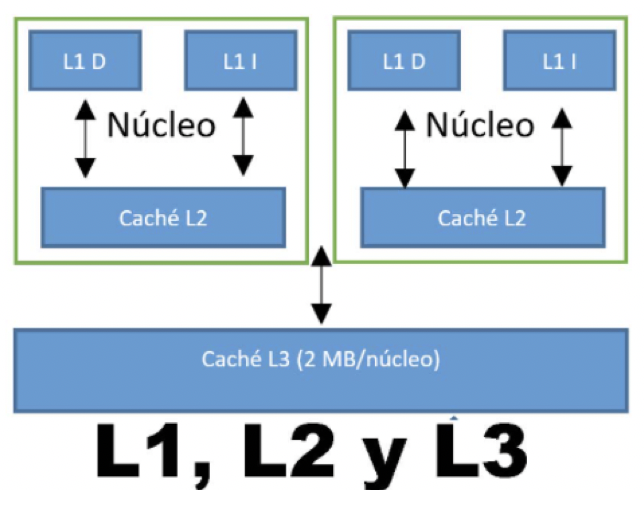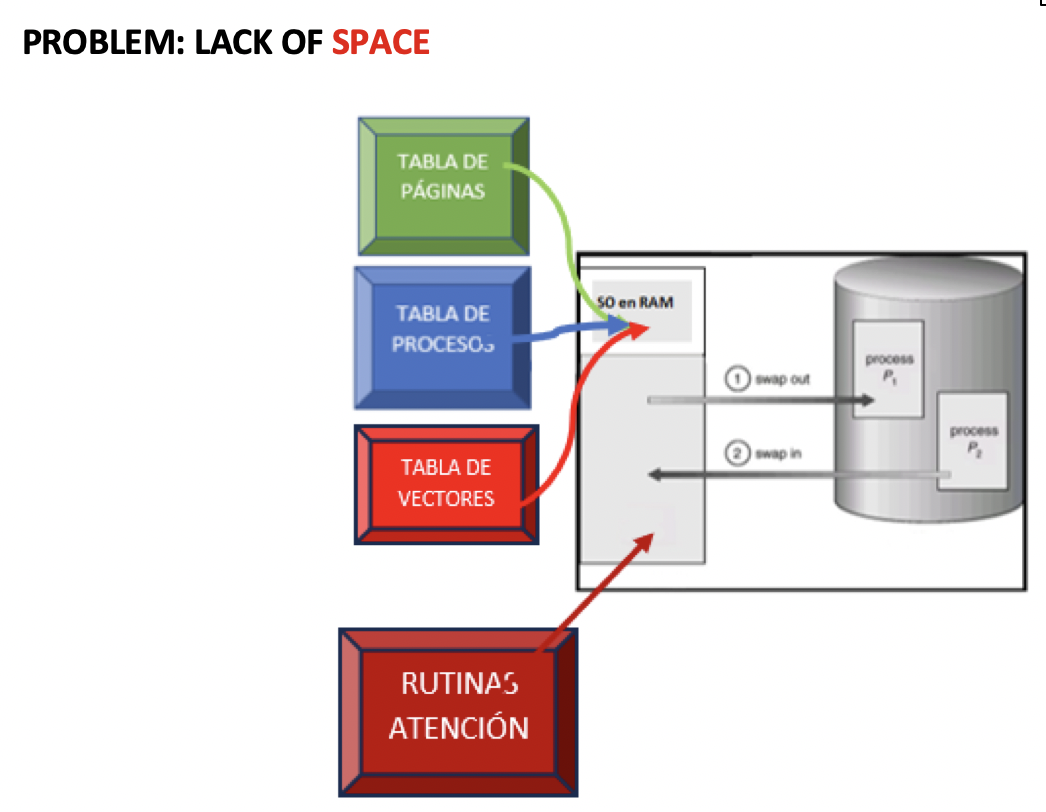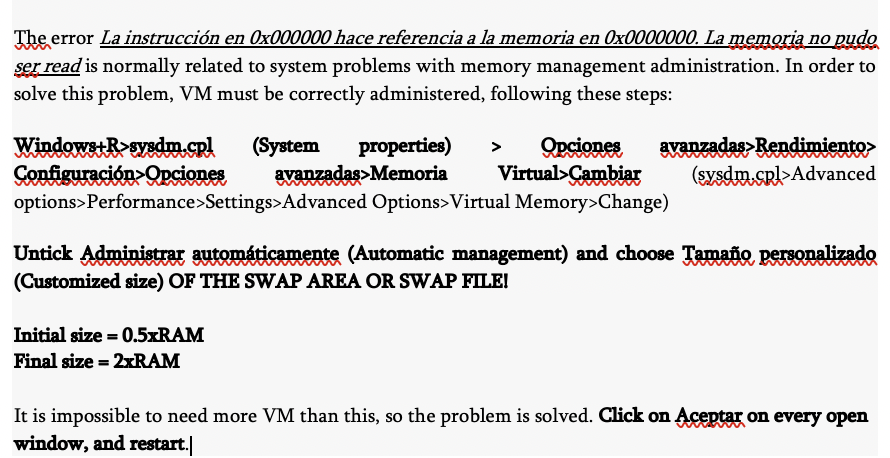2.10 Optimization management
✅ Optimize the computer
- File Management: FAT32
- RAM management: Segment, Paging
- Process management: FIFO, SJF
- IRQ/DRG: DMA, Polling, PIO
- 👉🏻 All this make the computer overloaded
- 👉🏻 We need to optimize the computer
✅ Priority of computer components
- CPU
- Main Memory RAM
- Secondary Memory (HDD, SSD)
- Peripherals
- 👉🏻 We should optimize the computer components following this order
1️⃣ Lets help the CPU
🤒 Problem that CPU suffers
- 1️⃣ speed problem, being slow ➡️ bottleneck problem
- 2️⃣ temperature problem 💊 better refrigeration problem, better ventilation
💊 Solve the bottleneck problem
- Use CPU cache
CPU cacheis inside CPU- The
CPU cacheis divided into 4 potions
💡 CPU cache is stable
- in general,
CPU cacheis not deleted CPU cacheis stable(not deleted after session finishes)- unless we manually clean them
4 types of CPU cache
- L1D: Level 1 Data cache
- For data that CPU uses very very often
- 👀
power of 2, as in computer everything is in binary, it is stored in cache for frequent access - 👀
1s and0s
- 👀
- ☝🏻 one L1D per core
- it needs to be close to the CPU, as it is used very often to the nueman machine
🐁 size: comparatively small, we just want them for super frequent things
- L1I: Level 1 Instructions cache
- for instructions that we use very very often
- 👀 standard mathametical instructions, like
sum,minus,mul,div,move(move data to another space),sqrt(square root)
- 👀 standard mathametical instructions, like
- ☝🏻 one L1I per core
🐁 size: comparatively small, we just want them for super frequent things
- L2: Level 2 Cache
- Both instructions and data mixed together that we use quite often
- 👀 mathametical operations that are not so frequent:
log,cos function...
- 👀 mathametical operations that are not so frequent:
- 🐇 size: bigger than level 1, need to save both instructions and data
- 🗺️ location: located further away from the neuman machine, compared to level 1
☝🏻 one L1I per core
- shared L3: Level 3 Cache
- Both instructions and data we use sometimes
- 👀
loops, like for, while
- 👀
- 🐳 size: bigger, very big
- 🗺️ location: far from neuman machine
- ✋🏻 Shared level 3: Not one per core, shared among all the cores
- Level 3 cache uses front side bus
1
2
3
4
5
6
7
8
❓ If I have 8 cores, how many CPU caches do I have?
- L1D: 8
- L1I: 8
- L2: 8
- L3 : one shared L3 per core
👉🏻 in total 25 CPU cache memory
💡 ISA
- Instructions Set Architecture
- set of instructions that the CPU needs to exectute
- the instructions that come by default when I buy my computer
- factory settings of my CPU
the instructions that the neuman machines do by default
CPU cachehelpsISA, as some ofISAinstructions are stored in theCPU cache
1
2
3
4
5
6
7
8
9
❓ If I reset my computer to factory settings, pure nueman machine, am I deleting the CPU cache memory?
👉🏻 yes, we are deleting
w❓ hich element of the CPU cache helps the following?
- IPC to the kernel
- ISA
- IRQ
- DRQ
👉🏻 ISA
2️⃣ Lets help the RAM
🤒 Problem that RAM suffers
- 1️⃣ problem of space: even smaller bc of
process table, pages table, vectors table, service routinesand above all, processes!
💊 Sharing
- there are some common portions that several proecesses share
- 👀
menu bar in word, excel, ppt are more or less the same - If some processes have some elements in common,
- then put the same elements just one time on the RAM
and share it among the processes
- 👎🏻 the shared elements would be less secure
- as it can be accessed by several processes
- sharing can be deactivated
💊 Virtual Memory
✔️ Some processes are ok to be slow and is not used so frequently
- can be slow
- is not used all the time
- we do not need the process to be there all the time in the RAM
✔️ Page File and SWAP area
- we can leave the process in a specific part of the Harddisk(secondary memory)
- called in Page File
windows/mac/androidand SWAP area inlinux - 👉🏻 in
page file/SWAP areawe store the pages of the process that - we don’t use very often
- and we do not need so fast
- like having an extra storage
- 👍🏻 makes the RAM feel bigger than it seems
👍🏻 Feels like virtually, I have more RAM
- its called swap, bc when you need it,
- it seems the process is inside the RAM
But actually, the process is inside the hardddisk
- So in harddisk, it is generally for closed program
- but in SWAP part of harddisk, there are opened process
✔️ Format for Page File and SWAP area
- This area is in the secondary memory
- ⚠️ the format is different from starndard( NOT
FAT32,exFAT,NTFS,ext 2, 3, 4❌) - the format of
Page FileandSWAP areais called swap - as
Page FileandSWAP areais for helping the RAM,swap formatis similar to the RAM
✔️ Virtual Memory
- VIrtual Memory = my RAM ➕ SWAP in Harddisk
VM 🟰 MM ➕ SWAP area(SM)
✔️ Calculate the VM
- If RAM is small ⬇️ SWAP must be big ⬆️
- If
RAM < 4GB, SWAP must be two times the RAMSWAP = RAM * 2 - If
RAM = 4GB, SWAP must be same as the RAMSWAP = RAM - If
RAM > 4GB, SWAP must be half of the RAMSWAP = RAM / 2
1
2
3
4
5
6
7
8
9
10
11
12
13
14
15
16
17
❓ 3GB of RAM, my SWAP should be?
👉🏻 6GB
❓ Then how much is my VM?
👉🏻 9GB
------
❓ 4GB of RAM, my SWAP should be?
👉🏻 4GB
❓ Then how much is my VM?
👉🏻 8GB
------
❓ 16GB of RAM, my SWAP should be?
👉🏻 8GB
❓ Then how much is my VM?
👉🏻 24GB
⚠️ Error we can get if we do not follow the VM caculation rule
- If we follow these rules, we will never have a problem with the virtual memory
- However, if we do not follow these rules, we might get a problem
- cannot read instruction on
0x000000 if you see this error, you have a virtual memory problem
- this error occurs bc many OS take SWAP smaller than needed
- many OS prefer more pure HD than more SWAP
- 💊 deactivate the automatic VM supply(administración automatica memoria virtual)
- 💊 and supply VM manually
✔️ Perfect limits for VM
SWAPshould always be between half and double the size of theRAMhalf of RAM< size of swap <double of RAM- if my RAM is big, if my SWAP small, SWAP is
half of RAMmy VM would beRAM + RAM/2 = 1.5RAM - if my RAM is small, if my SWAP big, SWAP is
twice the RAMmy VM would beRAM + RAM*2 = 3 RAM - Thus, the VM size should always be
RAM * 1.5< size of VM <RAM * 3- 👉🏻 This size of VM would avoid the problem of VM
0xerror
1
2
3
4
❓ I have 8GB of RAM. Study the minimum and maximum limits of VM so I do not get the VM error.
👉🏻 8 * 1.5 < VM size < 8 * 3
👉🏻 thus, 12GB < VM size < 24GB
👉🏻 as long as I guarantee that my computer makes VM from 12 to 24GB, I will never get the 0x error.
3️⃣ Lets help the HardDisk
💊 Harddisk Buffer
- buffer: temporal storage for making profit of a data transaction
💡 proximity principle
- when you open a program, most probably you will need more than that
- 👉🏻 open more, also the ones next to the pointed program
- 👀 if you opened ejercicio 1, you will also open 2, 3,4…
- the extra can be stored in the
harddisk bufferto have it closer to you.
💊 Web cache, Broswer cache
- when we download elements from the web and we visit web pages
- most probably, we will use the element/web page later
- store the elements in the broswer cache
- web cache is a folder in the harddisk
- when we empty the cache, we are emptying the web cache
4️⃣ Lets help the
✅
✅
✅
✅
1️⃣
2️⃣
3️⃣
4️⃣
- 1️⃣
- 2️⃣
- 3️⃣
- 4️⃣ 👍🏻 👎🏻
1
2
3
4
5
6
7
8
9
10
11
⭐️⭐️⭐️ EXAM ⭐️⭐️⭐️
❓
👉🏻
------
❓
👉🏻
❓
👉🏻
❓
👉🏻





